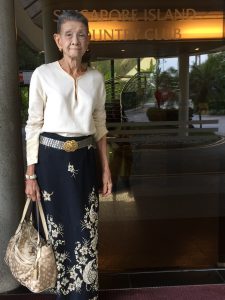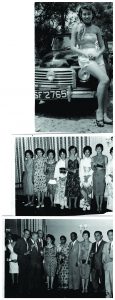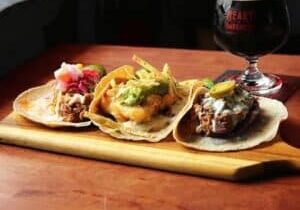
It is well documented that India has always had strong historic and cultural ties with Singapore and Malaysia and the rest of South-east Asia. But what is much less known is the fact that India proved to be a safe haven of choice for a sizeable number of families, especially children, from this region.
From 1942 to 1945 Singapore was occupied by the Japanese and renamed Syonan. It was probably the harshest time in living memory for its inhabitants who had to endure untold brutality at the hands of the Kempeitai (military police) and terrible living conditions. There was widespread food shortage and any resistance to Japanese rule meant torture and death. The Japanese Kempeitei (police) used fear through the media and their draconian rule to control the locals and education came to a standstill. Schools were shuttered and children were forced to learn Japanese.
It was in such a scenario that dozens of middle-class or well-to-do families took the painful decision to evacuate their wives and children to a war free zone where they could continue with their education and live in relative comfort and security while the menfolk stayed behind to hold the fort literally and figuratively.
Maureen Kang was among the lucky groups of evacuees that hastily booked their passage on board the ships bound for India with the families of troops and civilians. Only seven and half years old at the time, little Maureen was accompanied by her two sisters and four cousins and would never see home again for the next eight years till her schooling was over.
The 83-year old mother of three who still drives, recalls her time in a Catholic boarding school in Yercaud, a hill station in Tamil Nadu with a mixture of nostalgia and distaste. Some things still seem to rankle, such as the bullying by local students who used to taunt her to go back home. But she also has warm memories of the cosy life, the balmy climate and the friends she made there.
India Se met the elegant and spry former golfer recently at her regular haunt the Singapore Island Country Club where her late husband was a member for 40 years. This is where she spends her mornings meeting old familiar faces and dines as her younger daughter, lawyer and golf aficionado Gillian, fusses over her before driving home in her dinky little Volkswagon.
Here are some excerpts of the interview:
India Se: You were sent off to the boarding school during the Japanese invasion?
Mrs Kang: It was because of the war. I went to a European school, The Sacred Heart Convent Girls High School at Yercaud located about 5,000ft above sea level. India like Malaysia and Singapore was all under the British.
India Se: How did your parents choose the boarding school?
Mrs Kang: I think my parents found the school through our links with Pondicherry (formerly a French colony) as my father had French blood. The rest I cannot recall. It was an urgent move to prevent disruption of our education. I was around seven and a half years old.
India Se: Was your father was in government service?
Mrs Kang: My grandfather was a chairman of a Borneo company, my father was an official in government in Sarawak. Six of us from my family and my father’s brother’s family were sent off to boarding school. They consisted of my two older sisters and my four cousins, two boys and two girls.
Once the war began, we were quickly packed off. It was a beautiful ship and we travelled first class. It was called the Centaur –beautiful boat and good food. But when we went to school it was a big shock. We were timid, but the Burmese were aggressive – Penang Chinese were quiet. We were a bit rebellious but the Burmese were the most. But at that age we could be moulded.
India Se: What was your experience at boarding school?
Mrs Kang: India is a continent, so much travelling! It was quite an experience because we felt uprooted. Apart from British there were Chinese and Malays (Muslim Malayans). We were like the United Nations. There were children from Burma, Chinese from the Middle East – Bahrain, Japanese children (of mixed parentage), and Indians, which included Parsees too.
We mixed with our own. There were a lot of students from Penang, we were from Sarawak and there were the Tong family boys from Bahrain. I could have married them… they went back to Bahrain and asked me to go with them. There were four boys from Montfort School our brother school. I told Gillian’s father that I should have married them – I mean Johnny Tong! They were all super rich – his father was Chinese and mother was Persian.
Since it was a white school, we felt it was a big change for us but there was no choice because of war. Our education was in English. For the second language there was Tamil and Hindi with one European language but they did not offer Chinese. So we took French and that was taught by a pure French teacher. We are very disciplined because of the Catholic upbringing, because of the nuns.
Then came the food. They did not cater to our cuisine – there was only Indian. We asked for Chinese and Malay, the Burmese asked for theirs, but we were given the choice of only Indian or Western, so we chose Western – all the foreigners chose a Western diet.
We found it difficult to adapt to the culture and food. Actually, we never got a chance to experience local culture because we were secluded. We were also not allowed to speak our native languages – it was only English,
The weather too was different from Kuching. It was cold, we had four different types of uniform: serge (for the cold weather), Sunday uniform, daily uniform and a uniform for great feasts – Roman Catholic ones. It cost my parents a lot. They nearly went bankrupt. We paid for everything in Sterling
India Se: What about sports? Did you play many games?
Mrs Kang: I was number one in sports, especially netball. I never liked water sports but I liked tennis, hurdles and cricket.
Gillian Kang: (She could hit the golf ball very well with my father – her hand eye coordination was very good.)
India Se: Did you ever return home from boarding school?
Mrs Kang: For almost eight years, I did not come back. India was very lucky to have no war. But I had some bad times there too. Children can be quite cruel – they called us Chinese and Japanese and said ‘go back!’. Can’t help it, we looked different.
During the holidays, we came down the hill to a beautiful bungalow –holiday home. My father’s sister-in-law rented a big bungalow, she worked in a hospital in Madras.
We corresponded with family members by mail. Education was the same in India and Malaysia and I completed my O levels from an English board.
After O levels, I took a short break – I was only 16 plus – I got a job in a private British laboratory here in Singapore. I did not do research, but all the administrative work.

India Se: How did you feel coming back?
Mrs Kang: It was a real relief. We blended well and things just fell into place though we were all grown up.
India Se: What was the accepted marriageable age then?
Mrs Kang: Actually I got a lot of proposals at 17 – but how could marry? I was only a teenager.
My husband had a different experience. His education came to a halt when the war began but later he managed to qualify as an accountant, and was a business development officer for companies. I was his golf kaki but I don’t play golf anymore. I only played to keep him company.
India Se: Despite the high education cost, your family sent girls to study despite Asian preference for boys?
Mrs Kang: It was my amah’s decision. She was the matriarch and controlled the purse strings. She was very rich, had shares in gold mines and has a very strong personality, a real Nyonyah. My family is all girls – five girls and one brother, even cousins – two girls and two boys went to boarding school. And just because Amah herself was such a strong woman, she sent us all to boarding schools.) She was also very smart. She dug a hole and buried all her jewellery, so if the Japanese came, they would not find anything!











